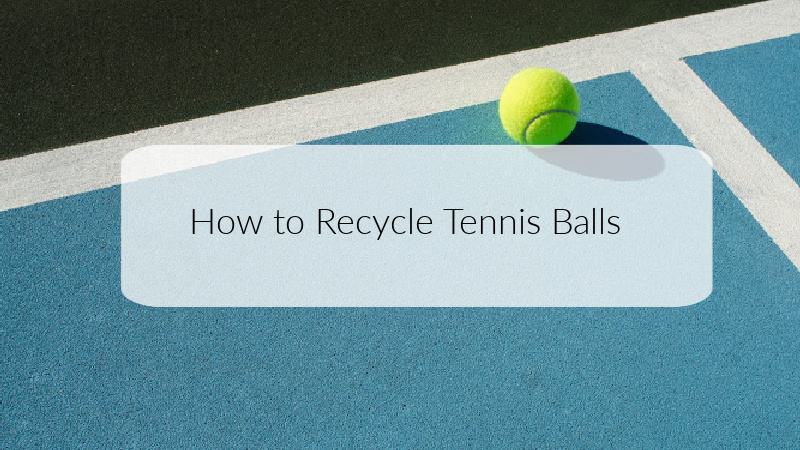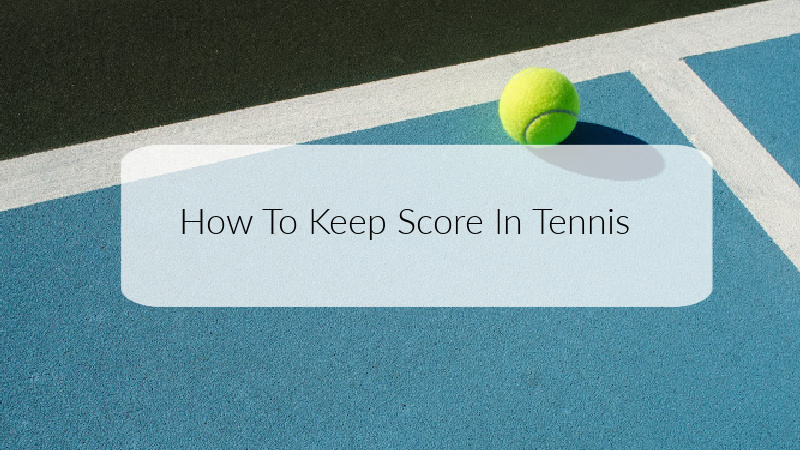If you’re stuck trying to find a gift for your tennis-loving friend, then have no fear, they’re actually pretty easy to buy for. Here are some great ideas to help you find gifts for tennis players or just lovers of the game.
Tennis Gifts
There are more than a billion tennis fans around the world, and if you can guarantee anything when something becomes that popular, it’s that people will start selling novelty gifts that cater to them. Even if your tennis-playing friend has gadgets up to the eyeballs, they probably won’t have one of these…
Does your tennis-fanatic friend serve their salad with the same kind of gusto as they do their topspin groundstroke? Then ensure they do so in true tennis fashion by gifting them these quirky, lightweight beechwood salad servers.
These SALADTEN1 salad servers from Suck UK will make a great addition to your friends’ kitchen and will keep them motivated to keep their diet light and healthy while training for their big tournament.
Tennis Bubble Gumballs
For some fun, tennis-themed stocking-fillers, you can’t go wrong with these flavourful Tennis Bubble Gumballs. They come in a pack of 12 tennis ball tubes and are made to look exactly like tennis balls – so real in fact, your friends will probably be tempted to give them a bounce.
These Tennis Gumballs are great novelty gifts for all ages and will prove to be a hit for tennis-themed parties or gift bags too.
ChalkTalkSports Personalized Printed Tennis Ball
Make sure your friends stay on top of their game by gifting them a personalized printed tennis ball from ChalkTalkSports. This ball – whether you customize it with your friends’ name or a personal message – will become the visual inspiration they need to slay on the courts.
This personalized printed tennis ball is not intended for use but decoration and motivation. It will become your friend’s favorite tennis-themed decorative piece for their desks or bedside tables.
You Just Got Served T-Shirt
This is the ultimate gift for that friend of yours who loves a good pun. This stylish, black t-shirt featuring the slogan, “You Just Got Served”, is made of 90% cotton, and will be sure to keep your friend cool and cheeky on the courts.
The text is printed in classic yellow-green and white tennis colors and is bound to get your friends a few giggles around the club.
Tennis Heartbeat Shirt
If you are certain your friend’s heart beats to the sound of tennis balls bouncing off the court, you can’t go wrong with a t-shirt that illustrates his sportive heartbeat. This simple and eye-catching Heartbeat t-shirt is made from 100% cotton and will make a great addition to your friends’ tennis wardrobe.
It’s Not My Fault: 150 Hilarious Excuses Every Tennis Player Should Know
One of the most important things we all need to succeed in life and our game is a good sense of humor. This funny little book of tennis humor features hilarious cartoons and the most ridiculous excuses that have been heard on courts from around the world.
It’s Not My Fault: 150 Hilarious Excuses Every Tennis Player Should Knowwill remind your tennis pals not to take themselves too serious and always find their sense of humor even during the toughest of matches.
Love Hurts Trucker Cap
Make sure your friend stays protected from the harsh sun rays during the next tennis season, by hooking them up with this cool “Love Hurts” trucker cap, featuring an embroidered tennis ball as the “o”.
The cap will act as a great reminder that, sometimes, we need to move through the pain and muscle-ache of training in order to thrive in the game we love.
Tennis Ball Wine Bottle Stopper
This is an excellent gift for the people in your life who have found the perfect balance between training and relaxation: a tennis ball wine bottle stopper. This unique gift is elegantly designed and will remind your friends to celebrate a great match with a good bottle of wine.
Candy Shop Tennis Gumballs
Here’s another great idea for your sweet-toothed tennis friends. These tennis gumballs have a deliciously fresh lemon flavour and can be used as cake-toppers and cookie decorations too. The ideal gift for your hard-hitting friends at the club!
Tennis Dammit Doll
If your friend is known to be a sore loser on the courts, help them avoid future embarrassment by hooking them up with a dammit doll. The tennis dammit doll was specifically designed to help keep your friends’ verbal aggression in check.
Instead of going on a foul-mouthed rant and throwing around their racket, they will now be able to throw around and beat on their dammit doll to let out their sore-loser aggressions.
You Got Served Served Wine Glasses
Allow your tennis friends and family to serve their favorite wines as beautifully as they do their backhand strokes with these cheeky You Got Served wine glasses. Dishwasher safe and stylish, these stemless big wine glasses will also serve a mean whiskey on the rocks or liquor of choice.
With so many tennis-lovers in the world, it’s not surprising that there’s a wealth of tennis-related equipment, gadgetry and novelty for all your gift-giving needs.
Official Wimbledon Towel
The Official Wimbledon Towel is a bit of a classic. In iconic purple and green, the towel is immediately identifiable with the century-old history of the world’s longest-standing Grand Slam tournament. Every Wimbledon towel sold is identical to those used by the players on court, so why not help your friend or loved one feel like a Grand Slam pro?
http://shop.wimbledon.com/stores/wimbledon/en/product/wimbledon-mens-2018-championship-towel/216355
Roger Federer Life Size Cutout
Every amateur tennis player will have an idol, whether from the long, nostalgic history of the sport, or a modern pro battling it out on the tour today. Tennis fans have idolized players for decades, with celebrities like Bjorn Borg, Pete Sampras and Martina Navratilova all reaching pin-up status in their time.
However, the innovation for the modern age is that now your idols can be sent to you in the post – in life-size Roger Federer cutout form!
So why not give the perfect gift, and let your tennis player spend some time with their idol?
Personalized Tennis Mug
Perhaps it just looks like a mug to you, but tennis fans will really love this. This mug is full customizable so your imagination. Commemorate your loved one’s imaginary victory over Rafael Nadal, or create a lasting record of that friendly office match, and with this tongue-in-cheek gift.
TopspinPro
The best thing you can gift a friend who is struggling with their topspin groundstrokes is a tennis-coach-approved tool that is guaranteed to improve their technique. The TopspinPro can make that happen – in just two minutes a day.
The TopspinPro screens are designed to force players to hold their racket tilted forward, providing a constant angle within the contact zone. With the ball mounted to a spindle, this tennis tool will allow players to practice the movements needed to brush up the back of the ball for perfect topspin shots.
BusyBee Tennis Dampeners
Everyone can use some motivational language from time to time, especially when preparing for an important game. Show your friend support by gifting them these colorful BusyBee tennis dampers.
These high-quality and durable dampers will kill any unwanted vibrations during your game while keeping your mind focused and calm. Each damper comes in a different color and features a different mantra such as, “Focus”, “You Got This” and “Move Your Feet”.
With so many tennis-lovers in the world, it’s not surprising that there’s a wealth of tennis-related equipment, gadgetry and novelty for all your gift-giving needs.
Tennis Gadgets
But what to do if you know a tennis player with all the latest equipment he could ever need? Well he may not know about some of the fun tennis gadgets being made today. You can buy everything from a Tennis Ball Dryer (because no one wants to play with damp tennis balls), to a portable tennis ball machine, helping players to practice their serve by firing out 150 tennis balls at them.
Adidas MiCoach Cell
Here’s the idea behind the Adidas MiCoach Cell: you take a little green sensor and clip it to the laces on your tennis shoes, synchronize it with the MiCoach app on your phone, and there you go.
MiCoach will track your rallies, your speed, the distance you run, the directions you run. All you need to do is check your phone afterward for a full roster of performance stats. What tennis player wouldn’t be tempted by that?
String Thing Tennis String Straightening Device
If you’ve ever watched a tennis match and wondered what the players are doing when they constantly look down at their rackets and pluck at the strings, I’ll tell you.
The players are straightening out the strings after the impact of the tennis ball onto the racket has knocked them out of alignment. Naturally enough, there’s also a gadget that can straighten those strings for you and that is the String Thing Tennis String Straightening Device.
Zepp 2 Tennis Swing Analyzer
Charge the Zepp Tennis Swing Analyzer, sync it to a phone via Bluetooth, attach it to a racket and then get swinging. That’s all a tennis player needs to do, and then when they check the App afterward they’ll be greeted by an amazing breakdown of stats. S
hot power, spin, the length of rallies – they’ll be amazed at what the Zepp Tennis Swing Analyzer can tell them. Even better, the app analyses the player’s swing and offers personalized tips, coaching and drills.
Tennis Ball Machine
If you have a friend that is really into their tennis and you don’t mind splashing out a bit on them, a tennis ball machine could be a great gift to help them get better at the game and practice without the need for a partner. Be warned they are quite expensive!
Tennis Gear
Why not begin with the basics? Tennis has come a long way since the age when rackets were made from wood. These days, having the right equipment can make all the difference to a player’s comfort and performance, so why not help your friend or loved one to get ahead?
Tennis Rackets
High-tech tennis rackets made from pro-grade, ultra-light nano carbons with motion sensors in the handle are no longer the preserve of the tennis elite. Brands like Babolat, Wilson, Völkl and Yonex have been working hard to make high-tech options affordable.
Something Like the Babolat Pure Drive is light and responsive enough for a pro to feel at home with it, and comes complete with sensors in the handle to help you track your performance. A gift like that should be enough to make most amateur players shout with excitement.
Tennis Shoes
A lot of people think that trainers are trainers and that a shoe that’s good for the gym will be just as good for the Tennis, but that really isn’t the case.
Tennis is a very specific sport that requires shoes tailored for sprinting and high impact movement (to absorb the shocks from all that jumping). Excellent grip and a well-cushioned heel are the features to look out for.
Buy your loved one some high-quality tennis shoes, like the Addidas Barricade Club, and their feet will love you forever.
Tennis Lessons
Lessons may not be “gear” precisely, but they’re the purchase most likely to help improve your loved one’s game. Once you’ve mastered the basics, real improvement in tennis tends to come from minor corrections in technique to one particular shot or another. That’s why almost any amateur player is going to be delighted by the opportunity to learn from an expert.
To make it even easier, many tennis clubs these days will offer gift vouchers for tennis lessons so that your giftee can book them for a convenient date and time.


